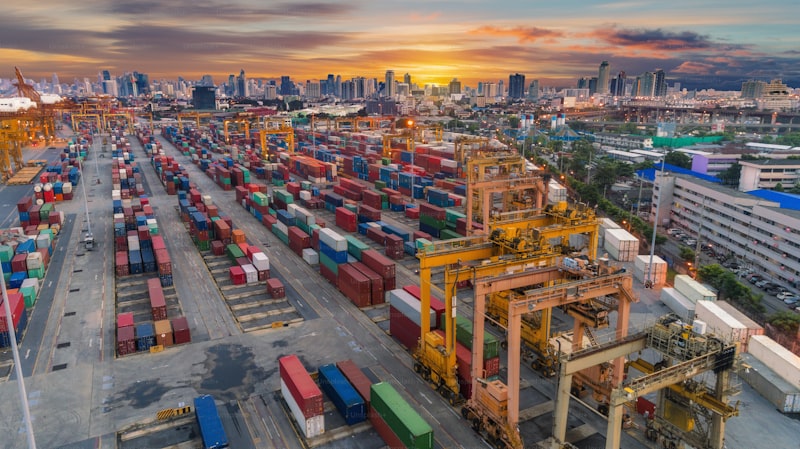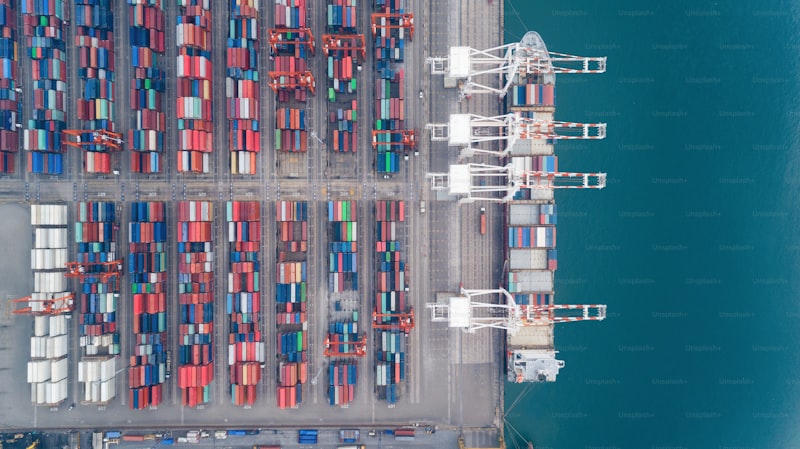Consider how a sudden tariff hike on imported raw materials can jolt manufacturing costs upward. A company heavily reliant on these materials might find its profit margins squeezed, prompting tough decisions on pricing or operational efficiency. Conversely, a trade agreement that lowers tariffs can open new markets, fueling expansion opportunities for businesses willing to seize them.
Trade policies aren’t just about tariffs; they can dictate product standards, intellectual property rights, and even environmental regulations. For instance, stringent environmental clauses in trade agreements may require businesses to adopt cleaner technologies or face market exclusion. This dual impact of regulatory compliance and market access shapes corporate strategies in profound ways.
Imagine a small-scale exporter gaining access to a previously restricted market due to a bilateral trade deal. Overnight, their customer base expands, revenues soar, and growth prospects multiply. Such transformations highlight how trade policies can serve as catalysts for economic vitality and business innovation.
Yet, navigating this terrain isn’t without challenges. The volatility of trade negotiations, geopolitical tensions, and regulatory complexities demand that businesses remain agile and well-informed. Strategic foresight becomes their compass in a landscape where policy changes can make or break profitability.
Navigating Uncertainty: How Trade Policies Shape Global Business Strategies
In the dynamic landscape of global commerce, trade policies wield immense influence over business strategies worldwide. These policies, crafted by governments to regulate international trade, can act as both catalysts and barriers for businesses aiming to expand their footprint across borders. Understanding their impact is crucial for any company navigating the complexities of today’s interconnected markets.
Imagine trade policies as the currents in an ocean, sometimes calm and predictable, other times turbulent and unpredictable. Just like skilled sailors, businesses must learn to read these currents adeptly to chart a course that ensures growth and stability.
Trade policies encompass a variety of measures: tariffs, quotas, subsidies, and regulatory standards, among others. Each of these elements can either facilitate or hinder the flow of goods and services between countries. For instance, a sudden imposition of tariffs can disrupt supply chains, increase costs, and force companies to rethink sourcing strategies.
Moreover, these policies can create opportunities. Governments often use trade agreements to foster economic partnerships and open new markets. Businesses that anticipate these shifts can gain a competitive edge by proactively aligning their strategies with emerging trade corridors.

Adaptability becomes a cornerstone of success in this environment. Companies must continuously monitor policy developments and adjust their operations accordingly. It’s akin to a skilled chess player, thinking several moves ahead to anticipate and leverage changing regulations to their advantage.
Furthermore, trade policies reflect geopolitical dynamics and economic priorities. A policy change in one part of the world can send ripples across industries globally. For example, heightened tensions between trading partners may lead to retaliatory measures that impact businesses far removed from the initial conflict.
Winners and Losers: Industries React to Shifting Trade Policies
Imagine you’re in the tech industry, where innovation moves at the speed of light. New trade policies can either open up new markets or slam doors shut. Take the example of recent tariffs on electronics components. For some companies, these tariffs meant reevaluating supply chains and possibly relocating production facilities to avoid increased costs. It’s a strategic dance between maintaining competitive prices and adhering to regulatory frameworks.

Now, consider agriculture, a sector deeply rooted in international trade. Changes in trade policies can significantly impact farmers and food producers. For instance, tariffs on imported goods may protect local farmers but could also limit access to cheaper produce from abroad. It’s a delicate balance between protecting domestic industries and ensuring food security without burdening consumers.
In contrast, the automotive industry thrives on global supply chains. Any alteration in trade policies affecting automobile parts can ripple through the entire manufacturing process. From steel tariffs to emission regulations, every policy tweak influences production costs and consumer prices. Automakers must swiftly adapt to these changes to maintain profitability and customer satisfaction.
Moving to healthcare, where pharmaceutical companies are intricately tied to international regulations. Drug patents, intellectual property rights, and import-export duties can determine whether a medication reaches patients affordably or not. Policy shifts here can either encourage innovation by safeguarding patents or hinder accessibility through price spikes.
Lastly, the fashion industry, known for its reliance on global sourcing and manufacturing, faces constant scrutiny under evolving trade policies. Tariffs on textiles or restrictions on labor practices can reshape supply chains overnight. Brands must navigate ethical standards, production costs, and consumer demands while complying with trade regulations that are often in flux.
The impact of shifting trade policies varies across industries, creating winners who adapt swiftly and losers who struggle to cope. Whether it’s tech, agriculture, automotive, healthcare, or fashion, each sector must anticipate and respond to regulatory changes to stay competitive in a globalized marketplace. The key lies in agility, foresight, and a keen understanding of how policy decisions can shape the economic landscape for years to come.
Trade Wars and Economic Growth: Assessing the Global Impact on Businesses
Imagine a global marketplace where every move is a strategic chess play. Countries impose tariffs and trade restrictions as weapons in this high-stakes game. The impact on businesses is akin to navigating a turbulent sea with unpredictable currents — challenging and full of risks.
For businesses, the ripple effects of trade wars are profound. Increased tariffs mean higher costs for imported goods, disrupting supply chains and squeezing profit margins. Companies may need to rethink their sourcing strategies, find new suppliers, or absorb the higher costs themselves, which can strain finances and limit growth opportunities.
Moreover, trade tensions can lead to uncertainty in financial markets. Investors become cautious, affecting stock prices and investment flows. Businesses planning expansions or new ventures may delay decisions until there is more clarity, stalling economic momentum.
Small and medium enterprises (SMEs), often more vulnerable to market fluctuations, face heightened challenges. They may lack the resources to pivot quickly or absorb unexpected costs, putting their survival at risk. Larger corporations with global operations aren’t immune either, as they navigate complex regulatory landscapes and geopolitical tensions.
The global impact of trade wars extends beyond economics. Diplomatic relations between countries can strain, affecting broader geopolitical stability. Countries that heavily rely on exports may face reduced demand, leading to economic slowdowns and potential job losses.
While trade wars are often seen as a negotiation tactic, their impact on businesses and the global economy is profound and far-reaching. As businesses adapt to these new realities, agility and foresight become crucial. Understanding the dynamics of trade wars and their implications is essential for navigating these turbulent waters and ensuring sustainable growth in an interconnected world.
From Tariffs to Treaties: How Trade Policy Changes Reshape Market Dynamics
When a government imposes tariffs, it essentially places a tax on imported goods. This move aims to protect domestic industries by making foreign products more expensive. Imagine you run a local shoe factory facing stiff competition from cheaper imports. By slapping tariffs on those shoes, your government aims to level the playing field, encouraging consumers to buy locally-made footwear instead.
On the flip side, treaties like free trade agreements tear down barriers between countries. Picture a scenario where neighboring nations agree to eliminate tariffs on electronics. Suddenly, companies in both countries can access larger markets without hefty taxes, boosting sales and fostering healthy competition. Consumers benefit too, as they get more choices at potentially lower prices.
The impact of these policies extends far beyond mere economics. Consider environmental regulations embedded in trade agreements. By requiring adherence to certain standards, such pacts promote sustainable practices globally. This not only protects the planet but also influences consumer behavior, as more people seek eco-friendly products.
Moreover, trade policies can dictate geopolitical relationships. A strategic alliance through trade can strengthen diplomatic ties between nations, fostering stability and cooperation. Conversely, trade disputes can strain relationships, leading to political tensions that reverberate across the globe.
Frequently Asked Questions
What are the benefits and challenges of trade liberalization for businesses
Discover the advantages and hurdles of trade liberalization for businesses. Learn how it can enhance market access and competitiveness, yet navigate complexities like increased competition and regulatory adjustments.
How can businesses navigate changes in trade policies effectively
Learn strategies for businesses to effectively navigate changes in trade policies, ensuring compliance, minimizing disruptions, and optimizing opportunities.
What role do trade policies play in global supply chains and market competition
Trade policies significantly influence global supply chains and market competition by regulating tariffs, quotas, and regulations that affect the flow of goods across borders. They can either facilitate or hinder market access, impact pricing strategies, and shape international trade dynamics.
How do tariffs and trade agreements impact business operations
Learn how tariffs and trade agreements affect business operations. Discover how tariffs influence costs and market competitiveness, and understand the role of trade agreements in reducing barriers and fostering international trade relationships.
What are trade policies and how do they affect businesses
Trade policies are regulations set by governments to manage imports and exports. They impact businesses by influencing tariffs, quotas, and trade agreements, which can affect costs, market access, and competitiveness.


